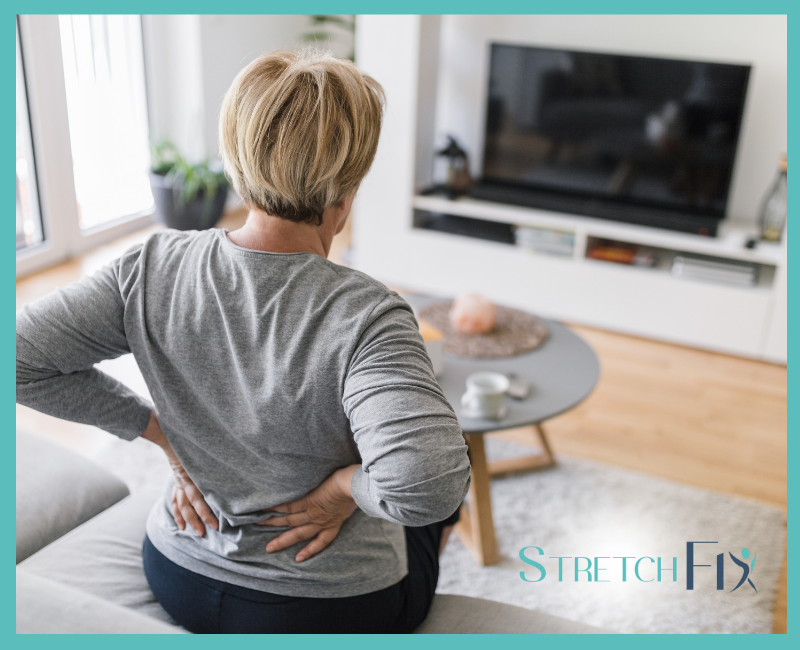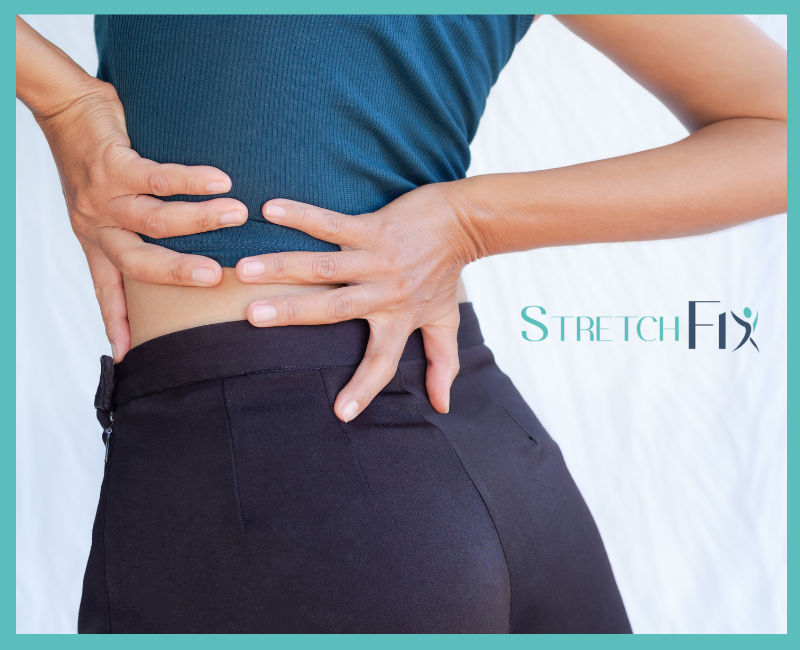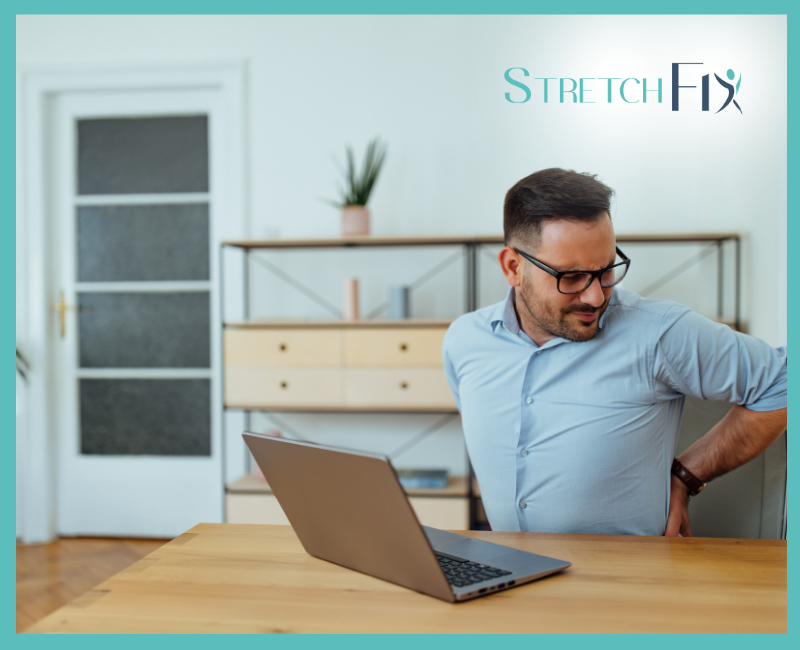Back pain is no joke. Conditions that cause back pain can be debilitating and incapacitating, preventing us from enjoying many (if any) activities that keep us happy, spry, and fit. According to the World Health Organization, low back pain (LBP) has the highest prevalence globally among musculoskeletal conditions and is the leading cause of disability worldwide. Causes of back pain are varied and numerous, affect people differently, and some conditions are even gender-specific. Here are seven back ailments that primarily affect women.
There are a number of back pain and related conditions that women are more susceptible to developing. Moreover, for women, back pain is more likely to become chronic over time.
Several conditions are more common (and can be exclusive) in women. Back pain-related problems are typically seen in the post-menopausal age (above 50 years). Read on to learn more about the common causes of back pain in women and the reasons why they occur.
1. Piriformis syndrome
Pain originating from spasms in your piriformis muscle, a large muscle located deep in the buttock, is called piriformis syndrome. Women are affected more due to hormone and pregnancy-related changes in the pelvis.
Piriformis syndrome often causes irritation or compression of the sciatic nerve, mimicking sciatica pain. Piriformis syndrome may cause:
- Chronic pain in the buttock and hip area that is worsened by hip movements
- Pain when you get out of bed
- Inability to sit for a long time
- Radiating pain in the back of your thigh and leg
The symptoms typically get better when you lie on your back.
2. Sacroiliac joint dysfunction
Pain from your sacroiliac (SI) joint that connects the bottom of your spine to your pelvis is called sacroiliac joint dysfunction or sacroiliitis. SI joint problems are among the more common causes of lower back pain.
Women typically have a smaller SI joint surface area compared to men, resulting in a higher concentration of stresses across the joint. The sacrum is also wider, more uneven, less curved, and tilted more backward in women, which may cause problems in the SI joint.
These factors and several other anatomical differences can lead to a higher risk of SI joint misalignment, especially in younger women.
SI joint dysfunction can also cause sciatica-like symptoms. Common features include:
- Lower back pain
- A dull or achy pain directly over the buttock, which may occasionally flare into a sharp pain
- A sharp, stabbing, or shooting pain down your thigh, typically not going past your knee
SI joint pain typically increases while you sit, lie on the affected side, and/or climb stairs.
3. Spinal osteoarthritis

Wear and tear arthritis (osteoarthritis) of the facet joints (joints that connect your vertebrae) is common in women. The risk is more with an increase in age and/or weight.
See Osteoarthritis of the Spine
Spinal osteoarthritis causes a breakdown of the fibrous cartilage in the facet joints. Without the cushioning provided by the cartilage, your bones may rub together, causing pain. Osteoarthritis of the lower back can cause:
- Pain in your upper or lower back, groin, buttocks, and thighs
- Back stiffness and pain in the morning
- Occasional flares of severe pain
The pain may occur on one side of your back, increase when external pressure is applied, and/or be relieved when you bend the spine forward.
4. Degenerative spondylolisthesis
When a vertebra in your spine slips over the one below it due to degeneration, it is called degenerative spondylolisthesis. The condition is more common in post-menopausal women due to lower levels of estrogen.
When estrogen is low, there is increased degradation of the vertebral disc and loosening of the ligaments that hold the vertebrae together—causing spinal instability. There is also a higher chance of associated spinal osteoarthritis among this age group, increasing the risk of vertebral slippage.
Degenerative spondylolisthesis can cause:
- Lower back pain with radiating pain in your legs
- Neurogenic claudication (pain while walking) if the spinal cord gets compressed
Pain relief is typically experienced when you bend forward.
5. Coccydynia (tailbone pain)
Pain in the tail end of your spine (coccyx) occurs largely due to trauma. The condition is more common in women due to the differences in the shape and angle of the pelvis and from injury during childbirth.
See Coccydynia (Tailbone Pain)
The coccyx serves as a weight-bearing support while you sit. An injury to this region can cause pain while :
- Sitting down
- Leaning partly backward while sitting
- Sitting on hard surfaces
- Standing up from a seated posture
Coccydynia pain is abruptly relieved once you stand up. You may prefer to sit by leaning forward or lean onto one buttock at a time to avoid the tailbone pain.
6. Endometriosis
Endometriosis is a gynecological disorder that affects women exclusively. The condition causes the tissues of the uterus to grow outside the womb. Typical symptoms include:
- Painful menstrual cycle with severe pelvic and lower abdominal pain
- Pain in the genital region
- Lower back pain, especially during menstruation
The pelvic and/or back pain may become chronic, with flaring during menses.
7. Spinal osteoporosis fractures
When the density of your bone decreases, making it brittle and susceptible to fracture, the condition is called osteoporosis. Osteoporosis occurs when there is a higher rate of bone loss compared to new bone formation. Women in the post-menopausal age are 4 times more likely to develop osteoporosis than men. This disparity may be due to the deficiency of the estrogen hormone, loss of bone at a younger age, and loss of bone at a more rapid pace.
See Who Is at Risk for Osteoporosis?
Osteoporosis itself can cause bone pain, but more commonly, it may cause compression fractures in your spine, resulting in acute back pain.1 Spinal compression fractures can cause :
- An acute, localized back pain that occurs typically in your mid-back or region between the mid and lower back
- The pain may spread in front and be confused with heart or lung problems
Depending on the severity, this condition may become a medical emergency.
Women may also experience back pain due to no unidentifiable cause. Typical changes in a woman’s lifecycle, including pregnancy, childbirth, hormonal imbalances, weight gain (especially in the abdomen) can trigger a cascade of events leading to back pain.
If you have back pain that is not relieved by self-care, causes neurological symptoms (numbness or weakness), or affects your daily work, consult a doctor. A doctor can help identify and treat the cause of your back pain. A trained medical professional can also recommend necessary lifestyle modifications, such as following an anti-inflammatory diet and a structured exercise routine to prevent recurrences.
Fortunately, back pain is the condition where the most significant number of people may benefit from rehabilitation. Targeted assisted stretching in conjunction with physical therapy sessions can help patients with back pain achieve relief and results more quickly. With expertise in diverse injuries, trust our StretchFix professionals to guide you through healing with confidence. Experience the StretchFix difference! Call today at (949)-276-5401 or join our IG community here!
Reference: [https://www.spine-health.com/blog/7-back-pain-conditions-mainly-affect-women]








